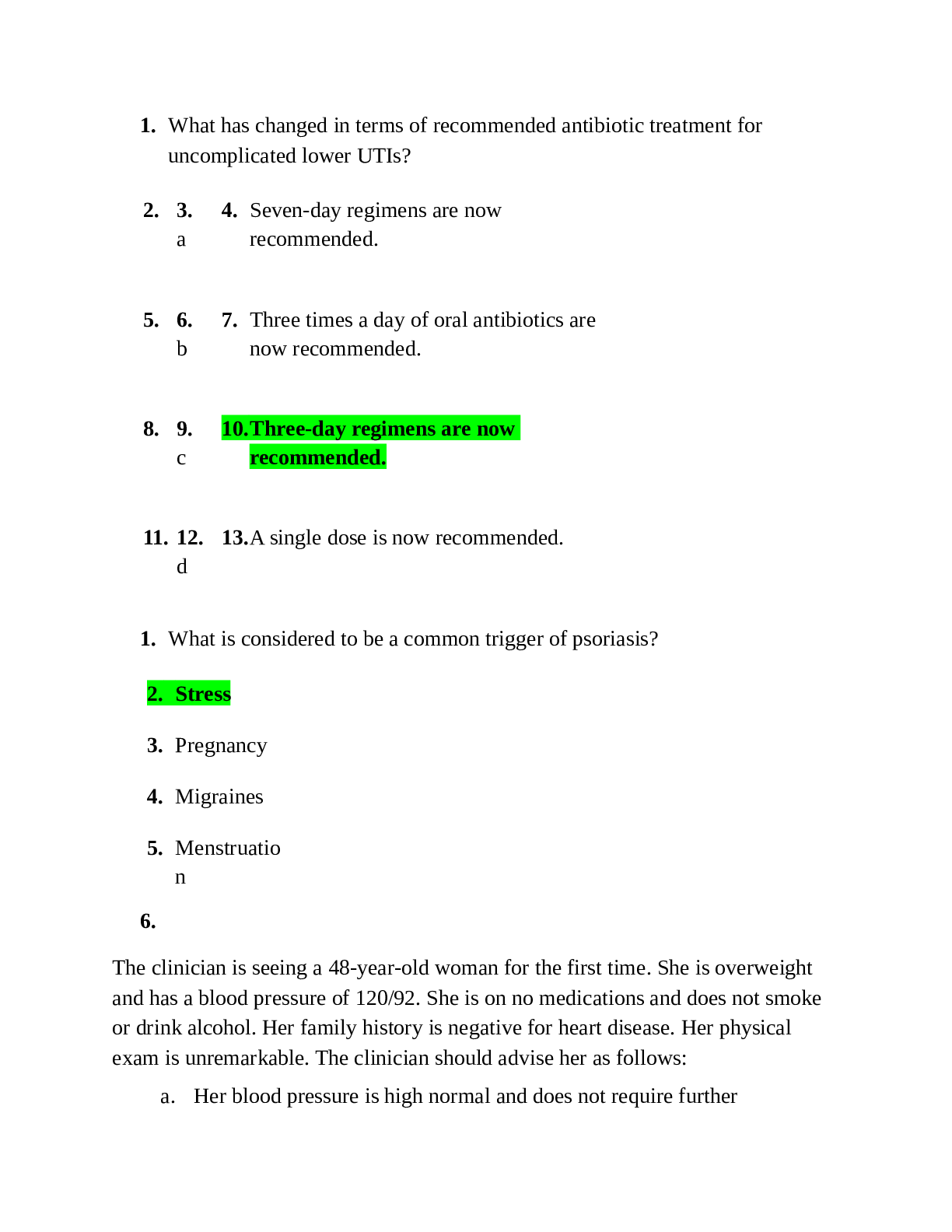HESI COMPREHENSION EXAM 3 WITH RATIONALE
Document Content and Description Below
HESI COMPREHENSION EXAM 3 1. A nurse performing an otoscopic examination of an adult client: A. Uses a small speculum to decrease the discomfort B. Pulls the pinna up and back before inserting... the speculum Correct C. Tilts the client’s head forward before inserting the speculum D. Pulls the earlobe down and back before inserting the speculum Rationale: The correct procedure for performing an otoscopic examination is to pull the pinna up and back and to visualize the external canal while slowly inserting the speculum. The nurse tilts the client’s head slightly away and holds the otoscope upside down as if it were a large pen. A small speculum may not provide adequate visualization of the ear canal and is more appropriate for use in a pediatric setting. Test-Taking Strategy: Note that the question addresses an adult client. Use your knowledge regarding the administration of ear medications to answer the question. Recalling that in an adult client the pinna is pulled up and back will direct you the correct option. Review the procedure for an otoscopic examination if you had difficulty with this question. Level of Cognitive Ability: Applying Client Needs: Health Promotion and Maintenance Integrated Process: Nursing Process/Assessment Content Area: Adult Health Reference: Ignatavicius, D., & Workman, M. (2010). Medical-surgical nursing: Patient-centered collaborative care (6th ed., p. 1115). St. Louis: Saunders. Awarded 1.0 points out of 1.0 possible points. 2. 2.ID: 383725584 A primigravida is admitted to the labor unit. During assessment, the client’s membranes rupture spontaneously. What is the priority nursing action? A. Checking the amniotic fluid B. Checking the fetal heart rate Correct C. Assessing the contraction pattern D. Preparing for immediate delivery Rationale: When the membranes rupture in the birth setting, the nurse immediately assesses the fetal heart rate to detect changes associated with prolapse or compression of the umbilical cord. Assessing the contraction pattern and amniotic fluid may also be a part of the assessment, but neither is the priority action. There is no information to indicate that immediate delivery is necessary at this time. Test-Taking Strategy: Note the strategic word “priority” in the question. Use the ABCs — airway, breathing, and circulation. Fetal heart rate is associated with fetal breathing and circulation. Review care of the client after rupture of the membranes if you had difficulty with this question. Level of Cognitive Ability: Applying Client Needs: Health Promotion and Maintenance Integrated Process: Nursing Process/Implementation Content Area: Maternity Reference: Swearingen, P. (2008). All-in-one care planning resource: Medical-surgical , pediatric, maternity & psychiatric nursing care plans (2nd ed., pp. 730, 731). St. Louis: Mosby. Awarded 1.0 points out of 1.0 possible points. 3. 3.ID: 383725586 A postpartum nurse is caring for a client who had a placenta previa. Which nursing intervention does the nurse, reviewing the plan of care, identify as the priority for this client? A. Fundal assessment B. Monitoring of urine output C. Frequent assessment of lochia Correct D. Inclusion of iron in every meal [Show More]
Last updated: 2 years ago
Preview 1 out of 8 pages
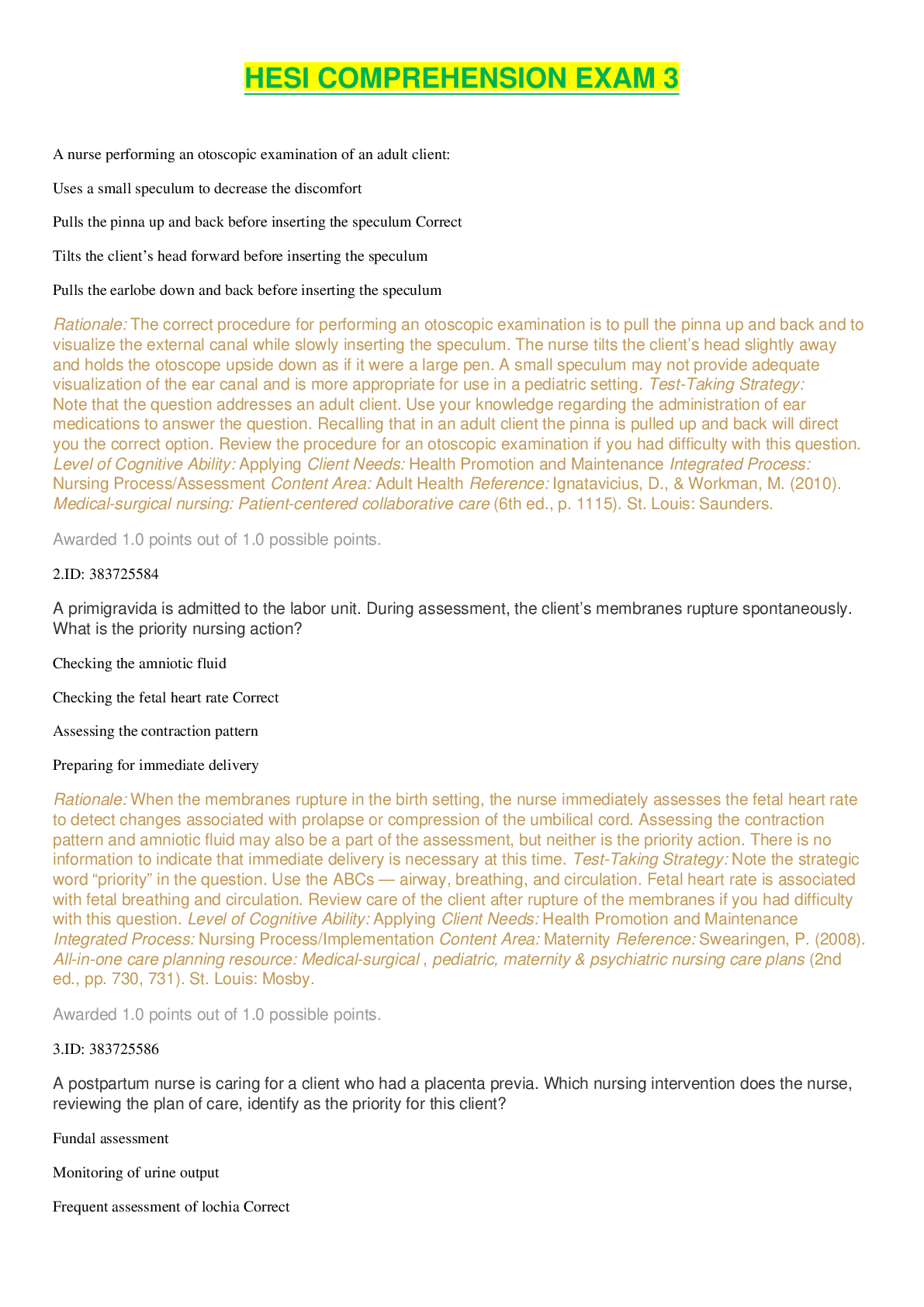
Buy this document to get the full access instantly
Instant Download Access after purchase
Buy NowInstant download
We Accept:

Also available in bundle (1)

COMPLETE HESI EXIT EXAM MODULES/EXAMS STUDY PACKAGE. ALL WITH RATIONALE. TOP RATED. DOWNLOAD TO SCORE A
COMPLETE HESI EXIT EXAM MODULES/EXAMS STUDY PACKAGE. ALL WITH RATIONALE. TOP RATED. DOWNLOAD TO SCORE A
By Quality Suppliers 4 years ago
$150
15
Reviews( 0 )
$15.00
Can't find what you want? Try our AI powered Search
Document information
Connected school, study & course
About the document
Uploaded On
Feb 08, 2021
Number of pages
8
Written in
Additional information
This document has been written for:
Uploaded
Feb 08, 2021
Downloads
0
Views
92


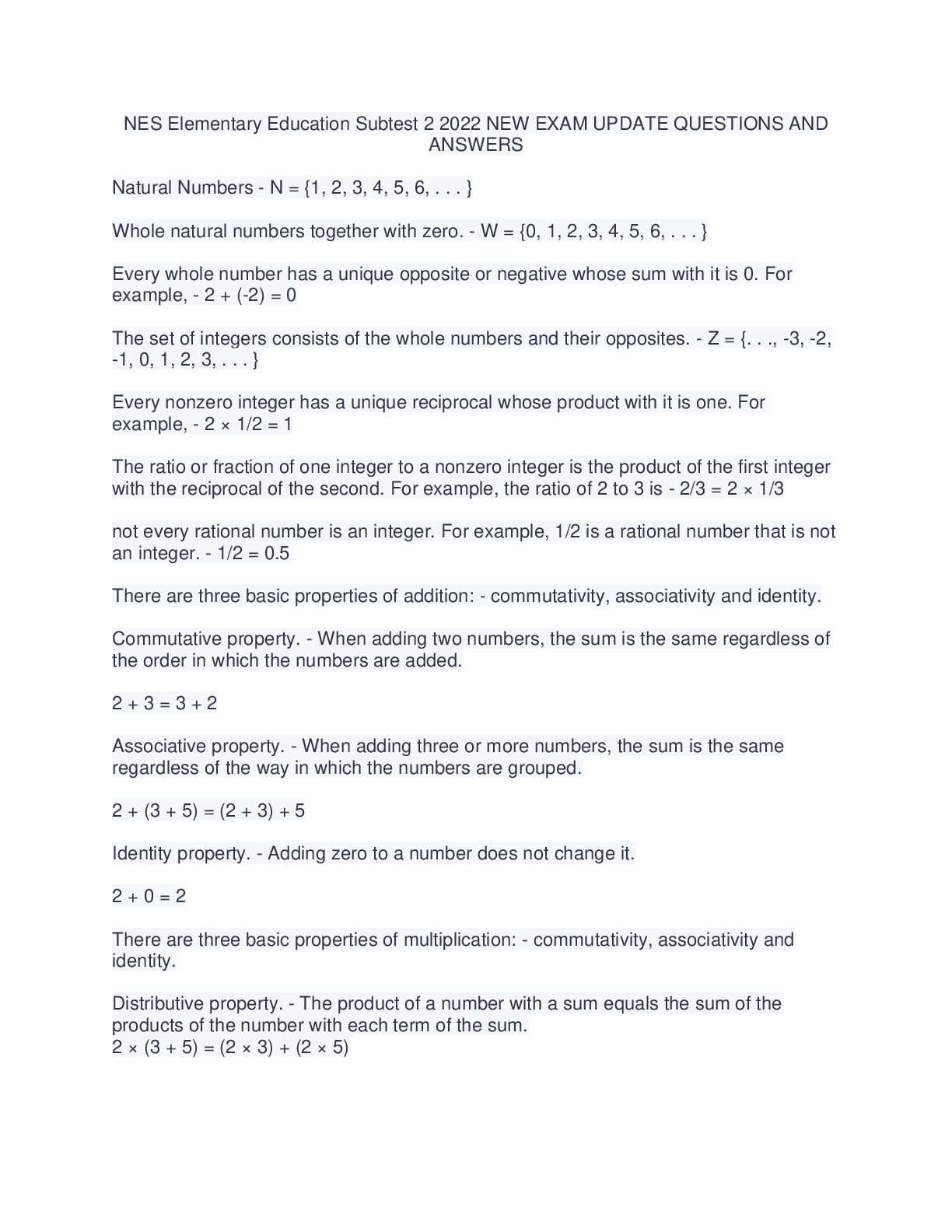
.png)

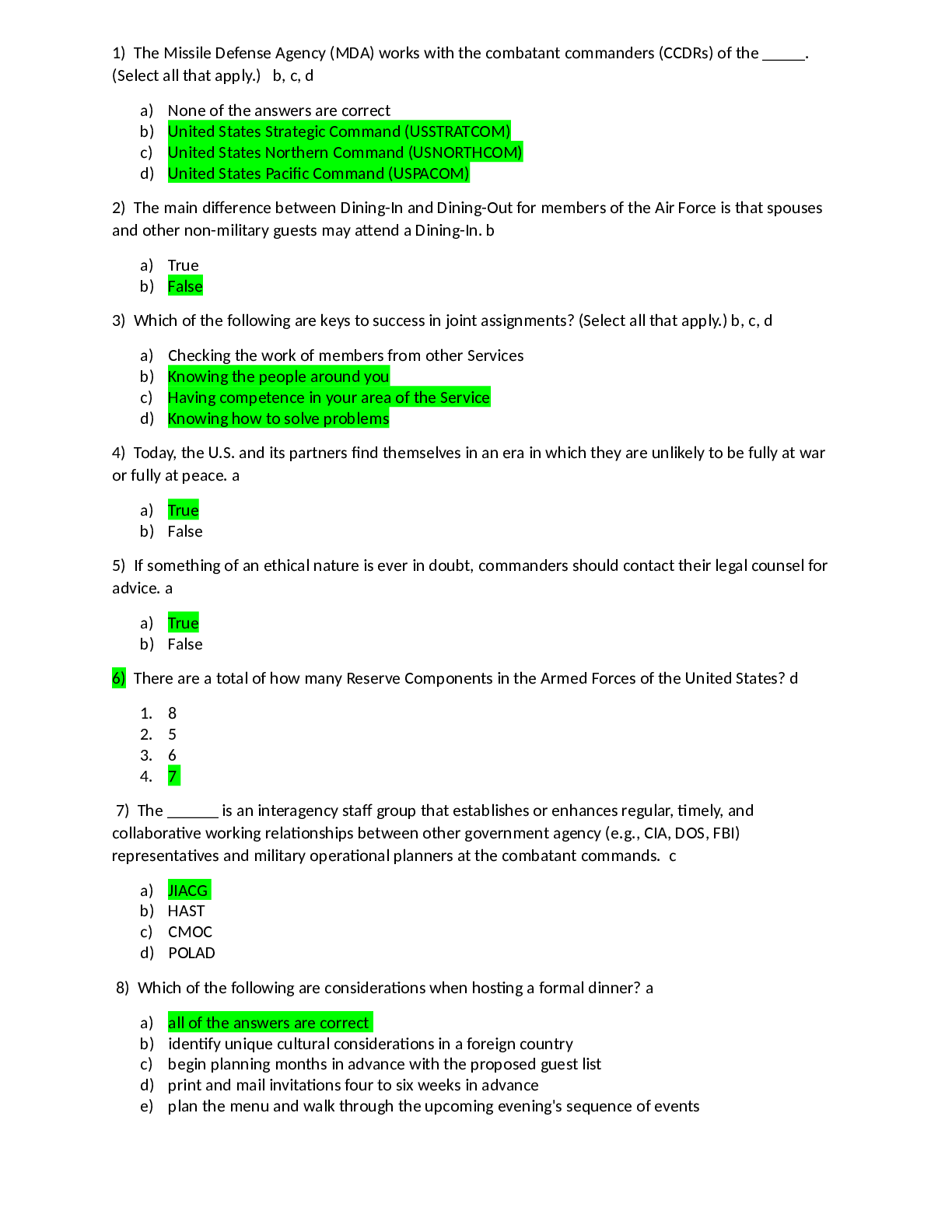
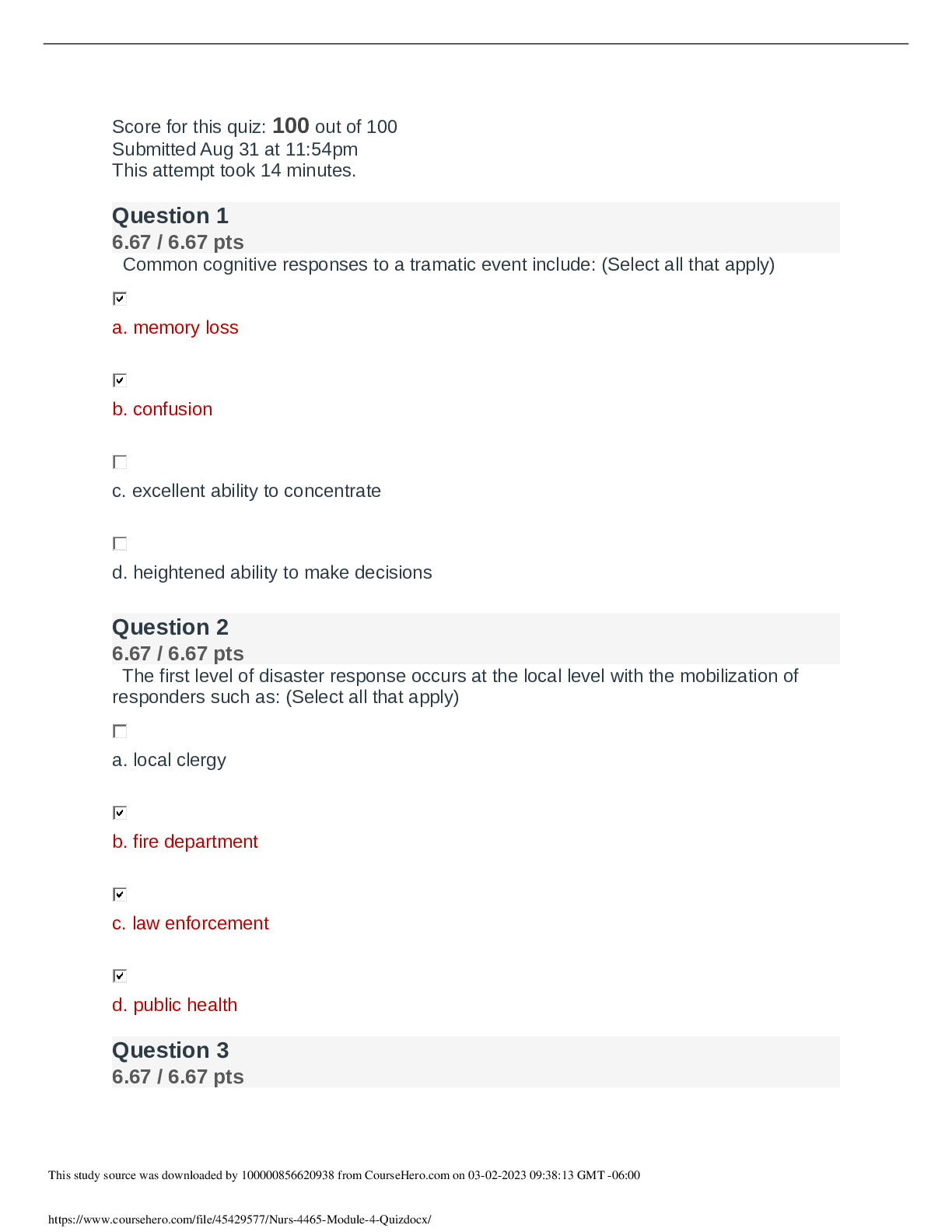
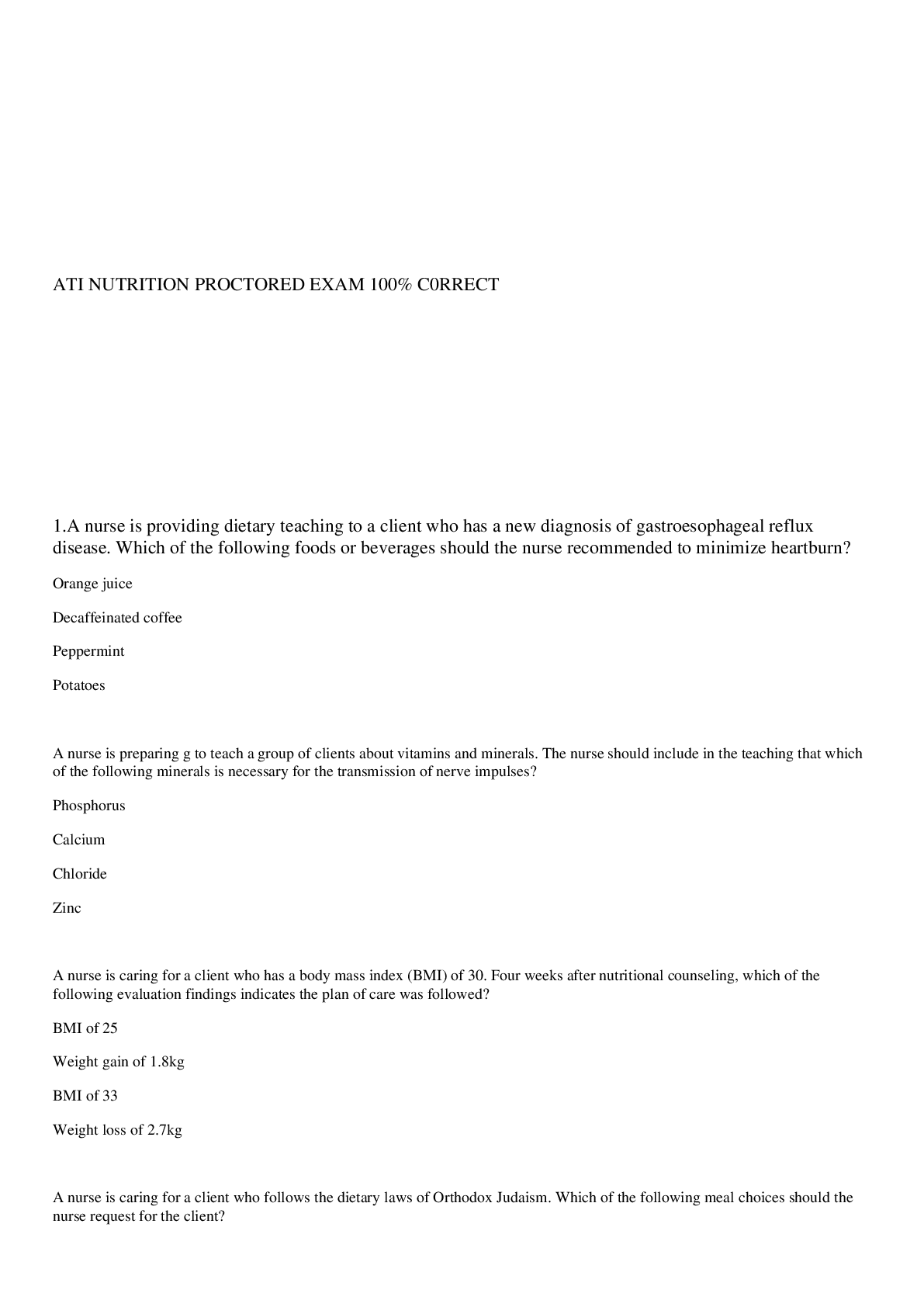
.png)
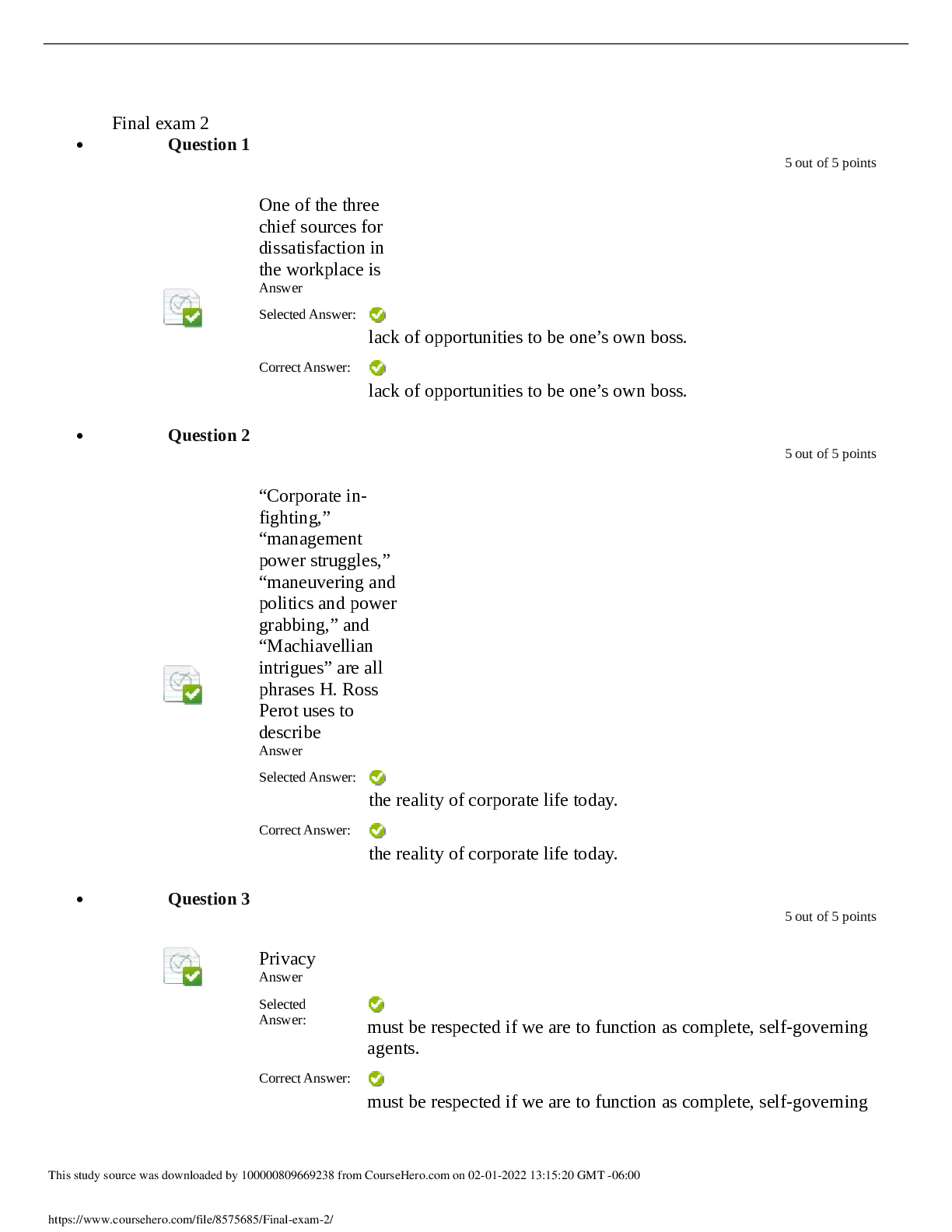
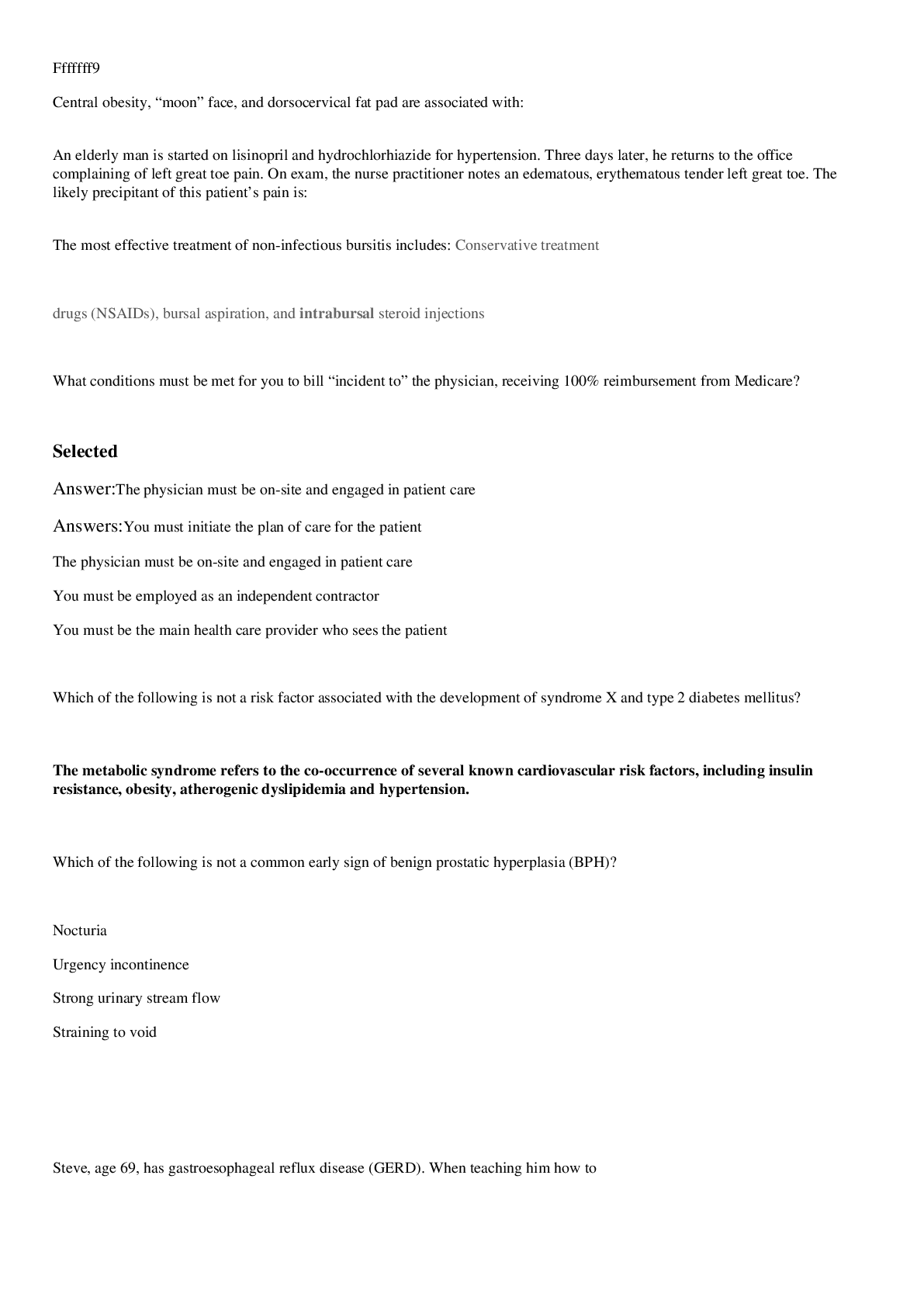
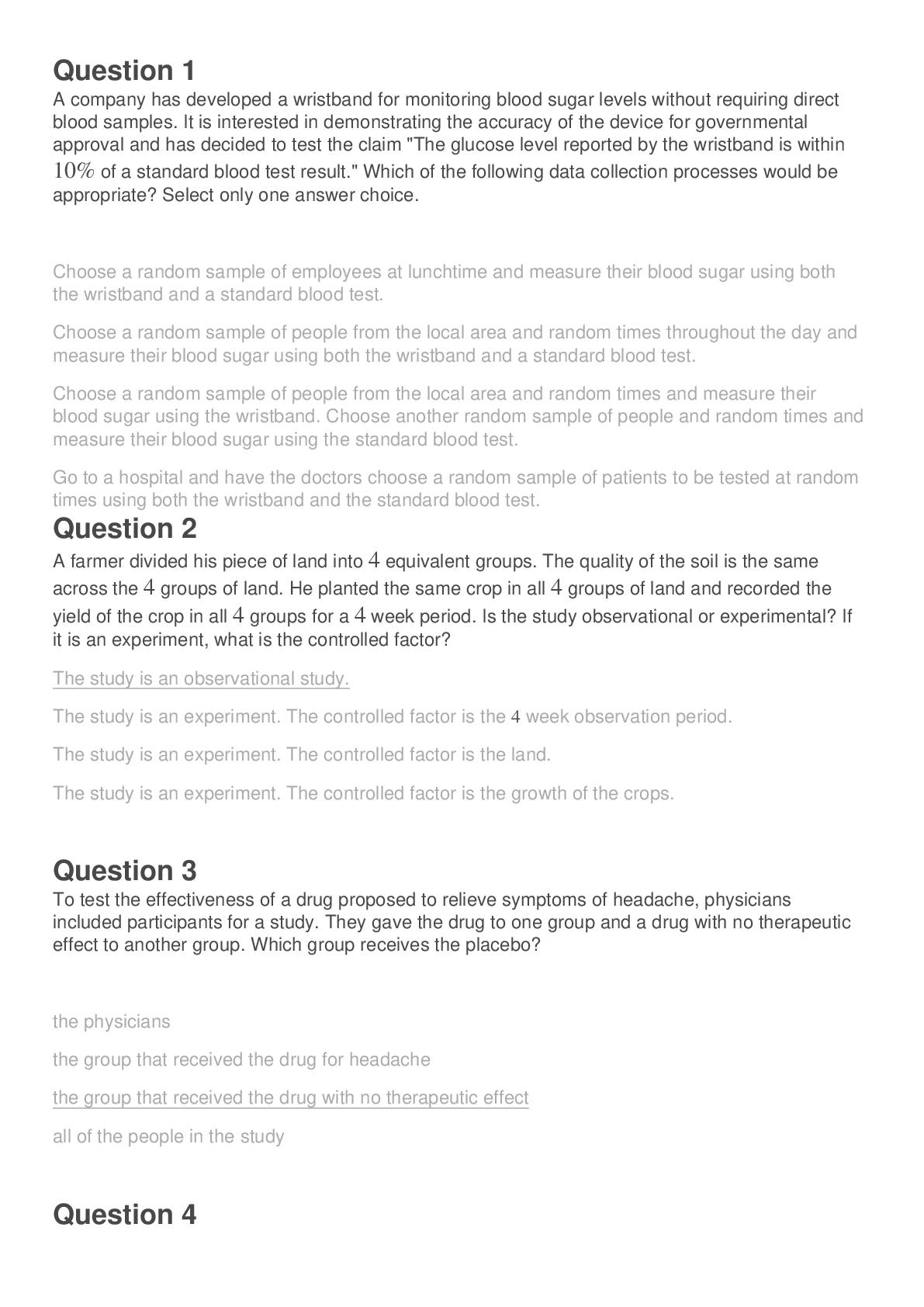
.png)







